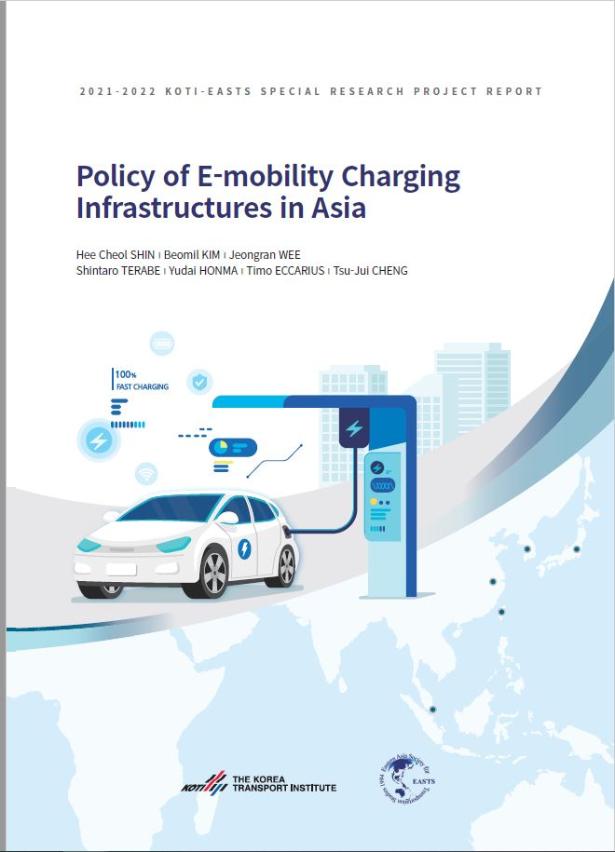Etc Report

RESEARCH
KOTI - Korea Transport institute- Date
May 14 2022
- Page(s)
124 page(s)

The Eastern Asia Society for Transportation Studies (EASTS) and Korea Transport Institute (KOTI) have been cooperated for disseminating exemplar transport policies in Asia for more than a decade. Based on such a decade-long cooperation, the two organizations carried out joint research in mutually interested topic and is willing to share outcomes with EASTS domestic societies.
KOTI and EASTS conducted a collaborative study to derive development plans for the expansion of e-mobility charging infrastructures in Asian countries through research and analysis of the e-mobility and charging infrastructure systems in each Asian country. Through this, it is hoped that Asian countries will achieve carbon neutrality in the mobility field more quickly and that they can solve climate change crisis.
It is desirable to investigate and analyze all Asian countries, but it is limited to some key countries in consideration of budget and time. Therefore, in addition to Korea, Asian countries such as Japan, China, Singapore, and Taiwan were selected as leaders in the e-mobility field. The findings are expected to support the expansion of e-mobility policies related with electric vehicles and charging infrastructures for better sustainable transport in Asian countries.
With this joint research, I wish the cooperation between the two institutes would be strengthened further for next decades. Lastly, I would like to express my deep gratitude to all researchers from the two organizations who participated and contributed for productive outcome of this report.
Contents _ 4
Table _ 6
Figure _ 6
Executive Summary _ 9
Introduction _ 17
Policy of BEV Charging Infrastructure in Korea _ 21
Section.1 BEV Distribution-Related Policies in Korea _ 22
Section.2 Current BEV Charging Infrastructure in Korea _ 28
Section.3 BEV Charging Infrastructure Private Business _ 41
Section.4 Policy Suggestions _ 45
Policy of BEV Charging Infrastructure in China _ 49
Section.1 Overview _ 50
Section.2 Development of Charging Infrastructure Industry _ 50
Section.3 Contributing Factors _ 53
Section.4 Policy for Future Direction _ 54
Policy of BEV Charging Infrastructure in Japan _ 59
Section.1 Overview _ 60
Section.2 EV Usability _ 65
Section.3 EV Subsidies _ 70
Section.4 Location Analysis for EV Infrastructures _ 73
Section.5 Policy Suggestions _ 75
Policy of BEV Charging Infrastructure in Singapore _ 77
Section.1 Overview _ 78
Section.2 Current E-mobility System in Singapore _ 78
Section.3 EV Roadmap and Policies for Singapore _ 79
Section.4 Charging Infrastructure Planning in Singapore _ 82
Section.5 Possible Beneficial Scheme for the EV Charging Facility _ 84
Section.6 Policy Suggestions _ 86
Policy of BEV Charging Infrastructure in Taiwan _ 87
Section.1 Overview _ 88
Section.2 Mechanisms and Actors in Promoting the Electrification of
Private Road Transport _ 90
Section.3 Electric Vehicles and Charging Infrastructure _ 93
Section.4 Policy Suggestions _ 98
Infrastructures for BEVs _ 101
Section.1 South Korea _ 102
Section.2 China _ 105
Section.3 Japan _ 108
Section.4 Singapore _ 111
Section.5 Taiwan _ 112
Conclusions _ 115
References _ 118